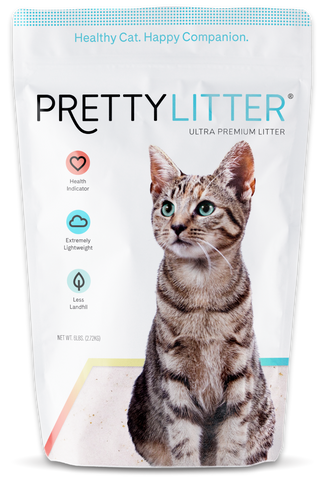
If you've ever been a witness to your fur baby using your kitchen faucet as her own personal cat water fountain, you're not alone. While you may have thought your kitty was an odd ball for lapping up water from the spout, this oddity has been reported by other cat parents.
Just like us humans, cats get thirsty. Especially in the summer time, your cat will want to refresh her tastebuds with a cool drink of water.
While drinking water is a great sign that your feline friend is staying hydrated, if you notice your cat is over-drinking – which is sometimes evident by vomiting up water after a long drink – you might want to keep a look out for other signals of an underlying health issue.
Here's why your feline uses your sink as her personal cat water fountain and what signs of a health issue to look out for.
Recognizing Unusual Changes in Her Routine
It's completely normal for your cat to steal a few water droplets out of your faucet spout. It's far more fun to drink out of a faucet than a boring ol' bowl anyway, right?
However, if you notice an unusual increase in the number of water breaks your kitty takes, you may want to look out for these health issue indicators:
- Watery vomit
- Urinating more frequently
- Drinking more water than usual but not urinating or urinating very little
If you find that your cat's water drinking gets excessive, pay close attention to her urination. If it's too much or too little, it could indicate a health concern.
Reasons Your Cat Is Over-Drinking
There are several normal causes for your cat's increased thirst. For instance, if it's summer, she may be simply trying to keep her body cool in the heat.

Also, canned cat food has a high moisture content, so cats who eat it don't take as many trips to the cat water fountain. If your cat's food hardly contains any moisture – like with a primarily dry-food diet – she'll try to find hydration elsewhere.
When You Should Visit Your Vet
While excessive thirst isn't a dead giveaway for disease, it can be a symptom of an underlying health condition. Over-drinking is a symptom associated with the following conditions and diseases:
- Diabetes mellitus – A cat disease where the pancreas doesn't secrete insulin properly, making it difficult to break down complex carbohydrates and sugars.
- Metabolic Disease – A disease in which a cat could be nutrient deficient or have a lack of nutrients in her system. There are several types of metabolic diseases that stem from different causes.
- Kidney Disease – A chronic disease that develops over time. It causes a cat's kidney to not function properly.
- Hyperthyroidism – A condition that happens in a cat's thyroid glands produce too much of a thyroid hormone. This condition is more common in older cats.
- Polydipsia – An uncharacteristic increased level of thirst that may be caused by other health factors, like diabetes mellitus, kidney disease, or
protein-lacking diet.
If you notice any irregularities in your cat's normal routine, you should consult with your vet. While it's possible your kitty doesn't have a health issue or disease at all (we hope!), only your vet can perform lab, blood, or hormone tests to be sure your fur baby is in the clear.
Prevent Health Issues With Early Detection
Paying close attention to your cat's drinking and urinating habits could help you catch diseases before they become worse. Cats typically don't show any signs of illness, disease, or pain until it becomes more severe.
Early detection of health conditions could help save your kitty's life. PrettyLitter was designed to help cat parents just like you pick up on early signs of disease and underlying health issues.
With PrettyLitter, the granules of your cat's litter change color to indicate different issues like UTI's, blood in urine, inflammation, or kidney issues. It can even warn you about potential health concerns before visible symptoms or pain occur.
Share this blog post with a kitty parent that can't keep their feline away from the faucet. Then share your thirsty kitty pictures with us on Instagram @PrettyLitter!




Follow Us